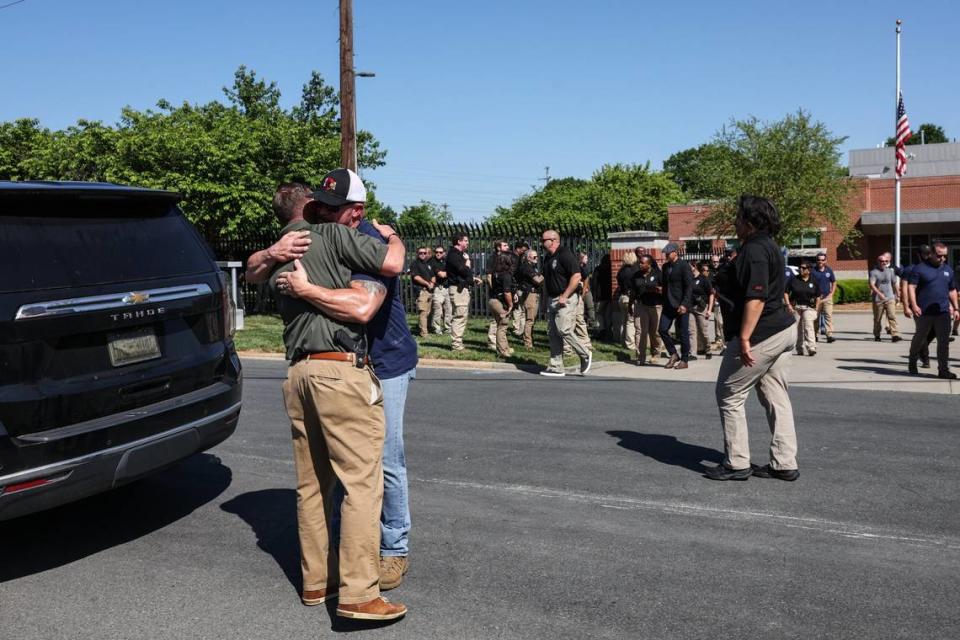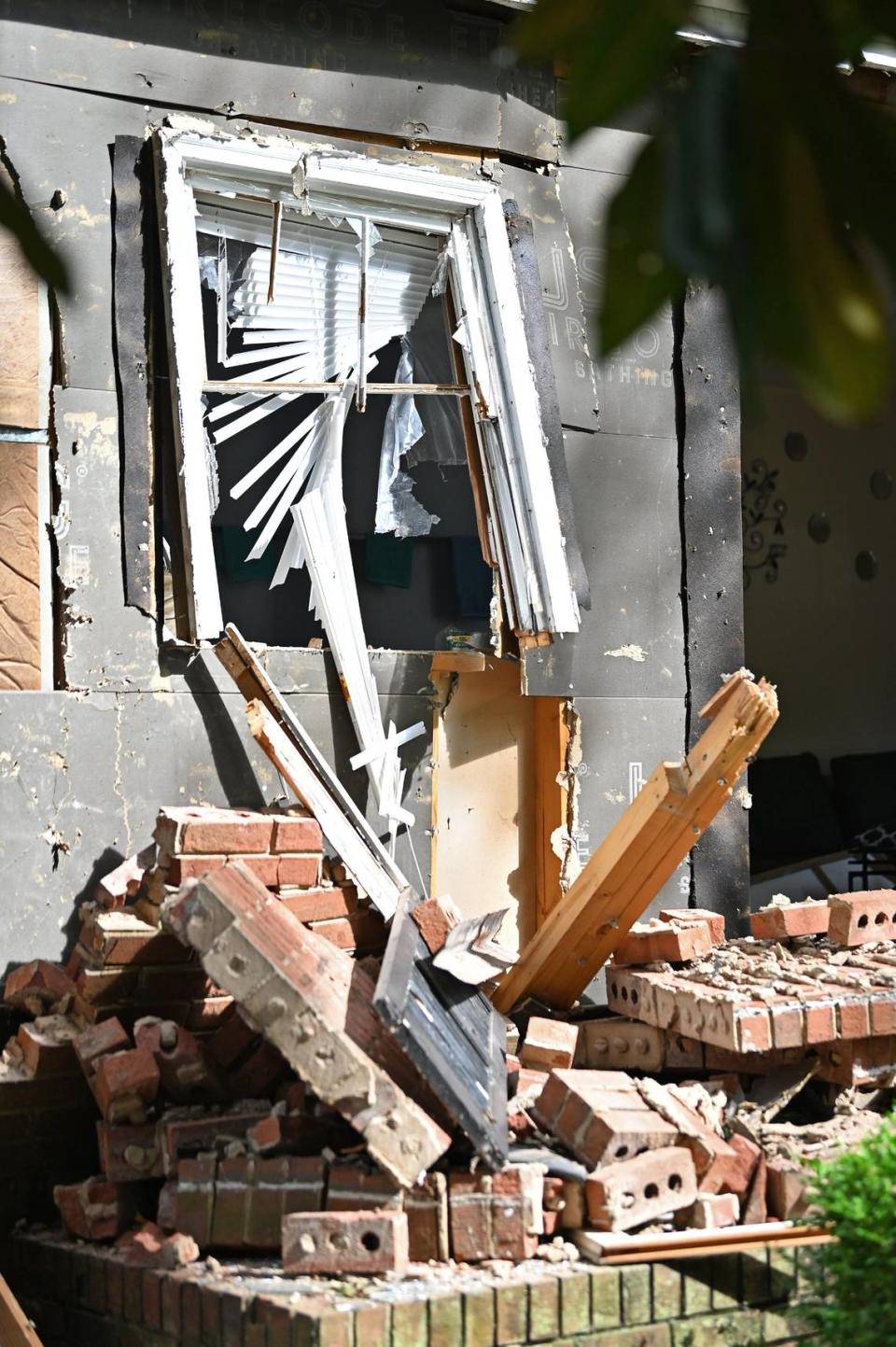Marshals, experts say many questions remain unanswered following Charlotte shooting
Policing experts said the timeline and context of events in Monday’s fatal shootout in Charlotte — in which four law enforcement officers were killed — is important in understanding what happened.
A review could lead to changes at law enforcement agencies nationally, one expert said.
“A situation like (Monday’s) was always my biggest fear,” said Anthony Cangelosi, a lecturer at the John Jay College of Criminal Justice in New York City who served as a deputy U.S. marshal from 1997 to 2000. “You think you’re just approaching the house and next thing you know, bullets come flying out.”
Four officers were killed and four others shot and injured Monday afternoon when members of the U.S. Marshals Service Carolinas Regional Fugitive Task Force went to a house on Galway Drive around 1:30 p.m. and tried to arrest a man on pending charges of eluding police and felonious possession of a firearm, according to Charlotte-Mecklenburg police.
After suspect Terry Clark Hughes Jr., 39, opened fire on members of the task force, he also shot CMPD officers who were responding to help before police fatally shot him, CMPD said. A woman and 17-year-old girl inside the house were taken to a police station for questioning but are not currently considered suspects, Chief Johnny Jennings said this week.
Thomas Weeks Jr., a deputy U.S. marshal, was among the officers killed. CMPD is conducting an investigation.
Answers to questions such as how many task force officers arrived to try to make the arrest, how they went about it and how and when police apparently used a vehicle to dismantle the front walls of the house are not yet publicly known. Twelve responding CMPD officers fired their weapons, according to Charlotte-Mecklenburg police.
The United States Marshals Service has declined to comment on the protocol of its task forces in arresting potentially dangerous people. No one from the Charlotte office of the Marshals Service responded to phone calls Tuesday and Thursday for this story.

“While Monday’s tragedy is still under investigation, we will have no option to discuss any aspect of the event,” Barry Lane, a spokesperson for the Marshals Service, said by email Thursday.
“There’s going to be some answers that aren’t going to be able to be given, some questions that will linger at least until we are able to get this investigation a little more complete,” CMPD Chief Johnny Jennings said at a news conference Wednesday.
High-risk arrests
The Marshals Service is a federal agency that protects federal judges, manages seized assets, transports prisoners, operates a witness security program and serves arrest warrants on fugitives. The Carolinas Regional Fugitive Task Force includes members from local law-enforcement agencies in the Charlotte region and state corrections officers alongside federal officers. It began operating in January 2018.
Police plan ahead when arresting someone like Hughes, one expert said.
“I think you can prepare as much as you possibly can, recognizing that you don’t know what you don’t know,” said University of Miami Professor Alexis Piquero, a former director of the U.S. Bureau of Justice Statistics.
Marshals task forces collect as much information as they can ahead of time, he said. They’ll build a “game plan” that lays out a person’s past, associates and neighbors and things like how busy traffic is on the street where a person lives, Piquero said.

“You’re trying to anticipate every single possible scenario,” he said. “If X happens, we’re going to do this. If this happens, we’re going to do this.”
Marshals Service Director Ronald Davis said at a news conference this week that every task force officer and deputy U.S. marshal receives high-risk fugitive apprehension training, and what happened in east Charlotte will be reviewed.
“Like any agency, we will always take a look,” he said in response to a question. “We will review this incident to see what lessons can be learned, what can be done. We are always striving to find ways to reduce deadly encounters and save lives.”
In an interview, Cangelosi, the John Jay College lecturer, raised the question of why task force members attempted to serve the warrant during the afternoon on Monday rather than early in the morning, when there could have been an element of surprise. He also wondered whether a SWAT team was there from the start or arrived after the shootout.
Every situation is unique, he said.
“I wish I knew more,” he said of protocols for Monday’s operation.
Questions unanswered
A law enforcement analysis of what happened could serve to make sure it doesn’t happen anywhere else if there’s something to learn or do in the future, Piquero said.
He said he was confident that the task force in Charlotte would have had every possible piece of information before trying to make the arrest on Galway Drive, and said he trusts that the task force members would have had no shortcomings in reconnaissance ahead of time.
Law enforcement took the situation seriously by assigning multiple officers to try to make the arrest, he said.
He said a key question will be how Hughes got the weapons he used against officers. Police found an AR-15 rifle and handgun at the scene, according to CMPD. Investigators had “probably over 100 projectiles and casings” to examine, the chief said.
“We are looking at how he acquired all of the guns,” Jennings said at Wednesday’s press conference. “We are making progress on that, and we’ll be able to determine that based on the purchase of the firearms, who purchased them and how he acquired them from that individual.”

